

Official Name: Republic of India
Capital: Delhi
Language: Hindi, English
Area: 3,287,590 sq. km. km
Population: 1,117 million
Currency: Indian Rupee (INR)
India - a country of ancient
civilization and an amazing treasure trove of art and culture. Portrait
of India built on contrasts: snow-capped peaks in the north and some of
the best beaches in the world in the south, the temples and monasteries,
magnificent mansions and miserable hovels, fabulous wealth and repulsive
poverty.
In India to send "the willing" tourists - those who know exactly what
they want from the trip. Some are sent to this ancient land for
spiritual enlightenment, others - for Ayurveda first-hand, and others -
for a relaxing beach holiday, a fourth - "break away" from civilization,
the fifth - with excursions to. One should understand the difference
between tourist "reservation" and the city, town, which is where one
billion people, and alert the customers. Spontaneous tourist country may
be very disappointed.
Climate in India
In this large country with significant vertical differentiation of various relief and distance from the ocean pronounced contrasts in the distribution of heat and moisture. In general, the climate of India have great influence monsoons. Multilevel factor determined the cold climate of high mountains in the north of India, while on the lower slopes of the mountains and the plateau has a temperate climate. Resorts in India are located in the zone of 1500-2300 m, Darjeeling and Srinagar are examples of places with a comfortable climate all year round. The average monthly temperature in Darjeeling range from 4 � C in winter to 17 � C in the middle of summer, when the cool weather prevails in contrast to the heat of the northern plains. Different thermal conditions common to many areas of the Indian subcontinent: the coldest month (January), the air is heated to 18-24 � C, and in summer - up to 24-29 � C. These are averages, often the day temperature rises to 32 � C. northern plains of West Bengal to the border with Pakistan, in the summer is very hot, and the average temperature in Bengal up to 29 � C, they gradually increase as the traffic on the north-west and in New Delhi in May, reaching 33 � C. The average temperature in Amritsar is 34 � C, and in the Thar Desert in the summer keep the temperature from 32 � to 38 � C and in winter 7-16 � C. Annual precipitation ranges from 100 mm in the Thar Desert to 10,770 mm in Cherrapunji station in the mountains of Khasi, one points of the wettest in the world. In Western India, the average annual rainfall following: Punjab 400-500 mm, 50-130 mm Thar Desert, Saurashtra (peninsula Kathiyavar) 650-1000, the west coast of India over 2000 and the east coast at the foot of the Eastern Ghats 1300-2050 mm. Central India receives an average of 650-1300 mm of rainfall per year. In the north-east of Peninsular India and the plains north of the country falls 1300-2050 mm, and in the eastern Himalayas and most parts of Bengal and Assam - more than 2000 mm. Rains in India brings the penetration of the Indian Ocean summer monsoon, which is amplified in early June on the west coast and around the middle of June on the east coast - in Bengal. When passing over the Arabian Sea and Bay of Bengal monsoon saturated with moisture, and move over India, deviating to the northwest. Rising over the mountains of the Western Ghats and Assam, monsoons cause heavy precipitation. Moving from the ocean at a rate of 16-24 km / h winds vlagonasyschennye accompanied by severe thunderstorms literally fall on the slopes of mountains in June, but then gradually weakens their impact and even terminated in the period from late September to mid-October. From November to March from the land blowing dry northeast monsoon. Linked with it cool clear weather, in the south-eastern coastal belt at the time of the retreat of the wet monsoon rainfall timed: their maximum falls in October - December. Given the data on temperature, precipitation and winds, the calendar year in India can be divided into three main and two intermediate climatic season. In November - February, when the dominant north-east monsoon, cool, sunny and dry. March - a month of transition, when the temperature rises, and from the end of this month until June last the hot dry season. By the end of its moisture content increases, and on the great plains of India, the weather becomes unbearably sultry and rainy. From June to mid-September is kept moist hot weather, heat slightly decreases when the sky is completely overcast and pouring rains, but generally south-westerly winds combined with high temperatures. October - a time of transition, high humidity due to evaporation from the surface of the fields, but the rain stopped.
Traditions of India
India has not accepted
the handshake. Instead, use a traditional Hindu gesture raise joined
hands to his chin, as in prayer, and shook his head and said, "Namaste."
Thus, local residents welcomed not only each other, but also their
guests. However, men do not hesitate to say hello to you by the hand, if
you are male. Handshake will be appreciated as a gesture of exceptional
friendship. For Indian women is unacceptable loose morals in
communication between men and women, made in the West, so avoid physical
contact, such as shaking hands, if you're a woman. Say hello to the
woman's hand (unless she first hands it is not), and do not put your
hand on the shoulder of a woman or a man. Comes to visit, and getting to
know someone well aware that the name of the Hindu usually consists of
his personal name, and then his father's name, caste, to which he
belongs and the name of locality (village) in which he lives. The names
do not matter, a married woman keeps her name in the documents referred
to as such and such, such and such a wife.
Try to keep the soles of your shoes have not been addressed in the sides
- it can be seen as a sign of disrespect. Do not show finger - use
gestures, arm, or jaw.
India has not accepted an outpouring publicly (hugs and kisses) - it is
improper for the locals. Men and women do not hold hands in public (only
the husband and wife, and that - in private.)
Exotic India sign - a huge number of cows in the streets of towns and
villages of India. We know that in India the cow - a sacred animal, and
if, God forbid, run over a cow - the consequences will be very sad, up
to life imprisonment. To avoid trouble better not to touch these
animals, dear to the heart of every Indian, the killing of cows and
eating beef is considered a grave sin. But the bulls are often used as a
labor force, with the exception of those related to Lord Shiva.
Particularly revered in India monkeys that live in the temples dedicated
to them. Animals fed with pleasure as Indians and tourists, sometimes
stick to the monkeys themselves strangers, pulling them by the clothes
and stretch legs. Once in the environment of these brats, better to give
them something to eat, or they can bite. In the famous Palace of Winds
in Jaipur monkeys so that the Indians do not advise tourists to inspect
it, as animals - autocratic masters of the palace - are aggressive
toward people. Pride and beauty of India - peacocks. Birds begin to
practice singing from morning to show off their vocal skills throughout.
In front of the temples, mosques or gurdwaras (Sikh temples), be sure to
take off your shoes, also in the house taken off your shoes and walk
barefoot. In the temples for a small fee you will be offered to leave
shoes to keep or offer covers shoes, are usually allowed to pass in his
socks. Do not take any of the temples of leather, it may find it
offensive. In many places in India practiced separation of men and
women, especially in churches and places of worship. Must adhere to the
practice. If you use the "dzhapamaloy" (rosary), try not to show them
and wear under your clothes, as all things are sacred and spiritual
practice should not be seen by random people.
In many cases, the photos inside the temple is prohibited, so before you
use the camera, ask permission. The tourists are usually friendly,
sometimes can be present during religious rituals. Visiting sacred
places, pay attention to the clothes, it must be modest. In Sikh temples
should be with her head covered in mosques, women must cover their heads
and shoulders, they should also be in long robes. Traditionally, the
lower the bit of money in the donation box.
India to greet teachers, respectable religious teachers, as well as
senior bowing and touching their legs (sometimes maybe just touch the
feet of the Master's hands, bent over, without a deep bow), then
straightening up and touching her head.
Of course, remember this is not too easy, in fact live here Hindus and
Muslims, Sikhs, Christians, Buddhists and Jains, but, following these
rules, you will be able to feel welcome in this country full of magic
antiquity.
Attractions in India
Taj Mahal
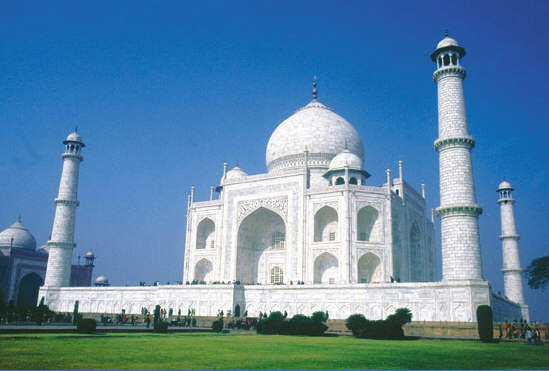
Taj Mahal - is not only a
building, but a range of sizes 630M to 300m. The entire design is
completely symmetrical structures: the main building is decorated with
four minarets at each corner, on the sides of the tomb - two mosques in
red sandstone, beautifully contrasting with the white marble. A garden
in front of the complex, divided into four equal squares. Centered
north-south axis runs pool, like a mirror reflecting the image of the
beautiful mausoleum of the palace.
In 2007, the Taj Mahal is entered in the list of the new seven wonders
of the world. Every year it is visited by up to 5 million tourists.
Despite the strict attendance rules, you can spend a romantic trip at
midnight in the moonlight silver palace - the Taj Mahal is opened to the
public on the night of the full moon and two days before and after
(except Fridays and the month of Ramadan)
Golden Temple
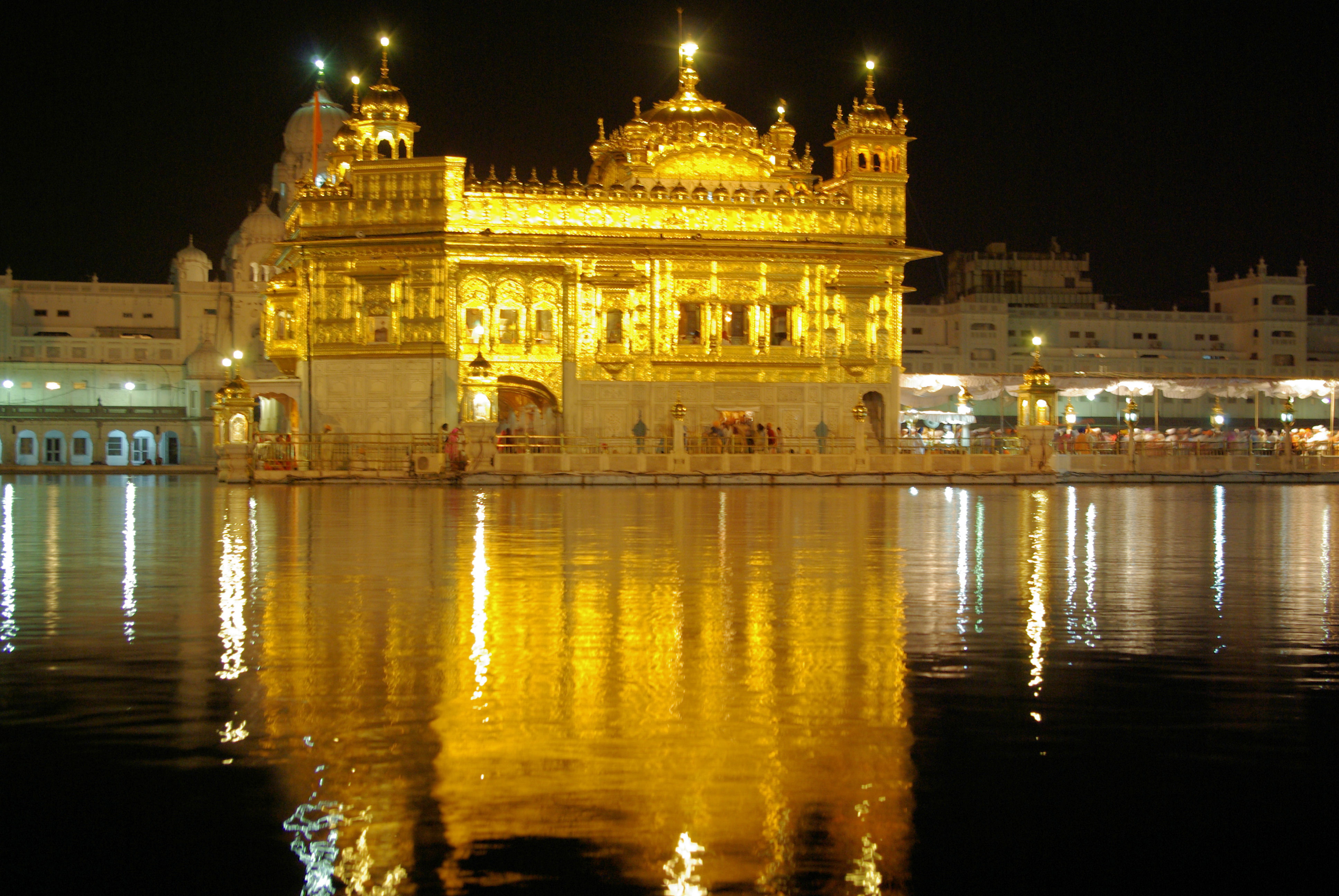
Anyone can enter the
Golden Temple, but visitors must observe certain religious traditions
and dress appropriately. As a sign of respect, the head should be
covered, and shoes must be removed at the entrance. In the same issue
tourist scarves provided for this purpose.
Inside, the interior is decorated with various sacred Sikh Guru. There
is also a central museum, where plaques recorded historical events and
anniversaries that are important to the Sikh faith. In tribute to the
Sikh soldiers who died for the independence of India during World War
II, is a monument.
In the Golden Temple in Amritsar kept the Guru Granth Sahib, the holy
book - a collection of religious poems and hymns by sikhiyskimi ten
gurus, as well as Muslim and Hindu priests. Hymns sung in church all
day, filling the halls of the palace with charming sounds of flutes,
violins and drums.
Here is a building of the Akal Takht, the Sikh place of residence of the
head of religion.
Many come to the Golden Temple in Amritsar in search of spiritual
enlightenment. Next to the main building are dormitories and dining
rooms for visitors. All coming, regardless of their nationality and
religion, free food and accommodation provided.
Agra Fort
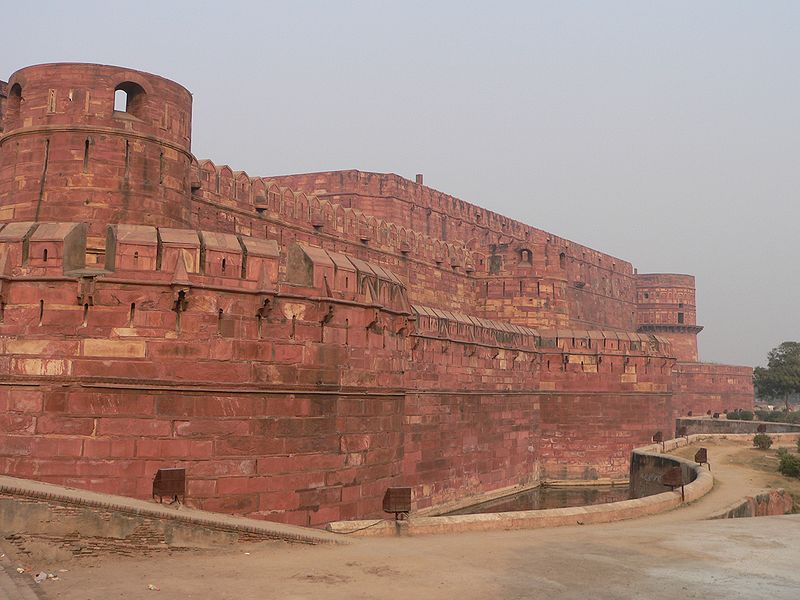
The construction of the fort was started by Emperor Akbar in 1565 and ended only in the reign of his grandson Shah Jahan. Use at first only for military purposes, the castle gradually became palace: high walls for a length of 2.5 km and a width of 10 m hiding amazing in its beauty gardens, terraces, halls and colonnades. Slender columns arches are in the courtyard, a stone canopy support. This is sort of a "city within a city", which is located in the heart of beautiful marble mosque, due to its perfect proportions and elegance called Moti Masjid (Pearl Muslim). In the fort can be reached via two major high portal in the west and in the south, in the east, there are "personal" imperial gates. It consistently settled three Great Mughal - Akbar, Jahangir and Shah Jahan, and each of them made a significant change in its architectural complex. One of the most remarkable buildings of the fort are: Jahangir Mahal Palace, Khas Mahal with adjoining vineyard called Anguri Bagh and ornamental pool, called the Shish Mahal, castle, moon and star Burj, where as a prisoner of his son held Shah Jahan, who died here while taking in the last days of the Taj Mahal (the tomb of his beloved wife), Diwani-Khas (Hall of Private Audience), Diwani-Am (Hall of Public Audience) Machhi Bhawan (palace with aquariums) Moti Masjid (Pearl Mosque). Most of the buildings that were built during the reign of Shah Jahan, built of marble and demonstrate sophistication contrasting with the architecture of the time of Akbar's buildings - a clear and vibrant. All the buildings of the fort, playing practical functions are true works of art, so harmonious and perfect their proportions, so refined and refined their appearance. The combination of Muslim and Hindu-Mohammedan culture gives a delightful effect, and natural Indian taste manifested in the landscape of buildings: the palace is surrounded by lush gardens, and the side of the structure is always in tune with the basic. Fabulous splendor of the Palace buildings in Agra speaks of refined imagination, originality and true liberal arts.
Cities in India
Vadodara
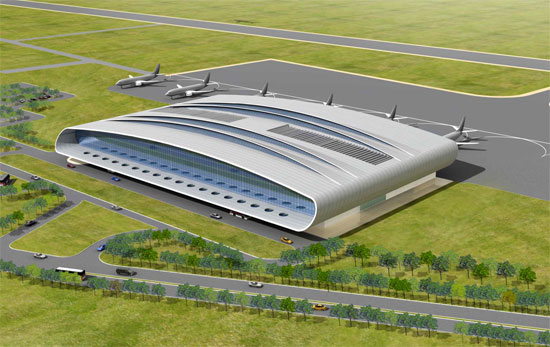 Although
this is the number one industrial city of Gujarat, it is still guess
heritage Gekvadov dynasty once ruled Vadodara. They made it their
capital, and gave her a middle name - Baroda, which is sometimes used to
date. The city has several parks and spectacular beauty of the palaces,
such as the House of Lakshmi, Pratap Palace and at least fine museums.
You should definitely visit the Museum and Art Gallery of Baroda.
Although
this is the number one industrial city of Gujarat, it is still guess
heritage Gekvadov dynasty once ruled Vadodara. They made it their
capital, and gave her a middle name - Baroda, which is sometimes used to
date. The city has several parks and spectacular beauty of the palaces,
such as the House of Lakshmi, Pratap Palace and at least fine museums.
You should definitely visit the Museum and Art Gallery of Baroda.
Modern Baroda - the great memorial of its last ruler Sayagyi Rao Gekvodu
Third (1875-1939). The dream of this talented Baroda ruler was to make
educational, industrial and business center. He achieved his dream
translate into reality.
Baroda is located on the banks of the Vishwamitra (whose name comes from
the name of the saint Rishi Vishwamitra). Chandravati city used to be
called by the name of the ruler Raja Chandan, then Viravati, meaning
"resting place of brave" and later the town was given the name because
of the abundance Vadparta Banyon trees along the river Viswamitra. It is
on this last name and formed modern Baroda and Vadodara.
The city of Baroda rich historical past. Historians can trace the
history of Baroda for more than 2000 years. However, recent significant
events related to 1732, when the power of the Mughals came to an end,
with the penetration of the Marathas in south Gujarat and its subsequent
capture. Except for a short break, Baroda continued to be under the
auspices of Gekvodov in the period from 1734 to 1949.
The flowering of the Maratha rule in Baroda came with the coming to
power of Maharaja Sayaji Rao III in 1875. It was an era of great
progress and constructive achievements in all fields.
Maharaja Sayaji Rao was one of the great reformers of the time. He
introduced a number of socio-economic reforms. He believed that economic
development is very important and has launched a number of industries,
and sent them to a private foundation. He initiated the production of
textiles and pottery. The fact that today Baroda is one of the most
important centers for textile, chemical and petroleum industries, due to
the result of the policy of Maharaja. He also presented a series of
social reforms. No other industry has not received much attention,
education, and not in any other direction were not received so
effective. He introduced compulsory primary education and library
movement began (the first move of its kind in India) - all this was done
in order to supplement the education system for adults.
That Sayaji Rao presented the general scheme of the development of all
branches of knowledge. Modern Baroda owes its beauty, educational
institutions and the architectural masterpieces of the great ruler of
his insight.
There is a saying that, under the banyan tree do not grow, but it is not
applicable to Baroda. Being a witness to the rise and fall of empires
and kingdoms of the Hindus, Pathans, Mughals, the Marathas, the city
occupies a unique position in the cultural, educational and industrial
map of India. The city managed to preserve the beauty of its rich and
varied past.
Residents of Baroda to provide visitors love the city as "Sanskar Nagari"
which means "cultural city". Most visitors svom agree with them. The
city is indeed alive the rich cultural tradition. And today people are a
diverse cultural life throughout the year.
A remarkable feature of the cultural life of Baroda - is cosmopolitan.
And despite the hundreds of individuals, each resident participates in
all activities. Therefore, culture is not a history or heritage, as a
dynamic, ever-changing present.
Tuticorin
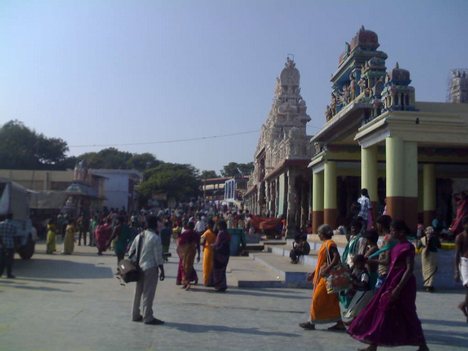 Tuticorin is - the southernmost city in
the state with the poetic name of Tamil Nadu ("Land of the Tamils"),
located in southern India. Tuticorin is located on the Gulf of Mannar,
east of the city Tirunelveli.Iz a small fishing village to the XVI
century the city has developed into a thriving Portuguese colony, and
during the Dutch and British conquests further expanded. Later, the port
lost its importance due to the growth of Madras.
Tuticorin is - the southernmost city in
the state with the poetic name of Tamil Nadu ("Land of the Tamils"),
located in southern India. Tuticorin is located on the Gulf of Mannar,
east of the city Tirunelveli.Iz a small fishing village to the XVI
century the city has developed into a thriving Portuguese colony, and
during the Dutch and British conquests further expanded. Later, the port
lost its importance due to the growth of Madras.
In the late 60's of the XX century the harbor was improved and deepened,
warehouses and commercial sector strengthened, industrial increased.
Most of the ship docks, however, are concentrated in 8 kilometers from
the main port in the south-east, in the New Tuticorin. One of the major
ports in India, it can accommodate vessels with a draft of up to 27 feet
(8, 24 meters). This makes it possible to turn coal and maritime trade
with Sri Lanka.
Sometime in Tuticorin pearl, and now this - a major industrial port that
provides a lot of jobs. The construction of new office buildings and
shopping centers gradually transforming the city's appearance.